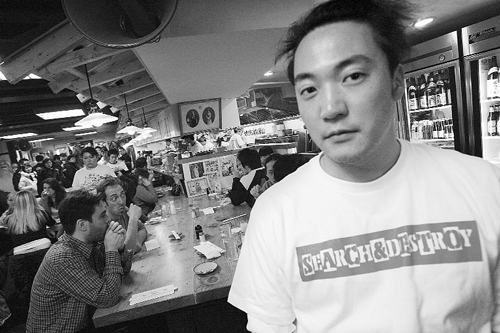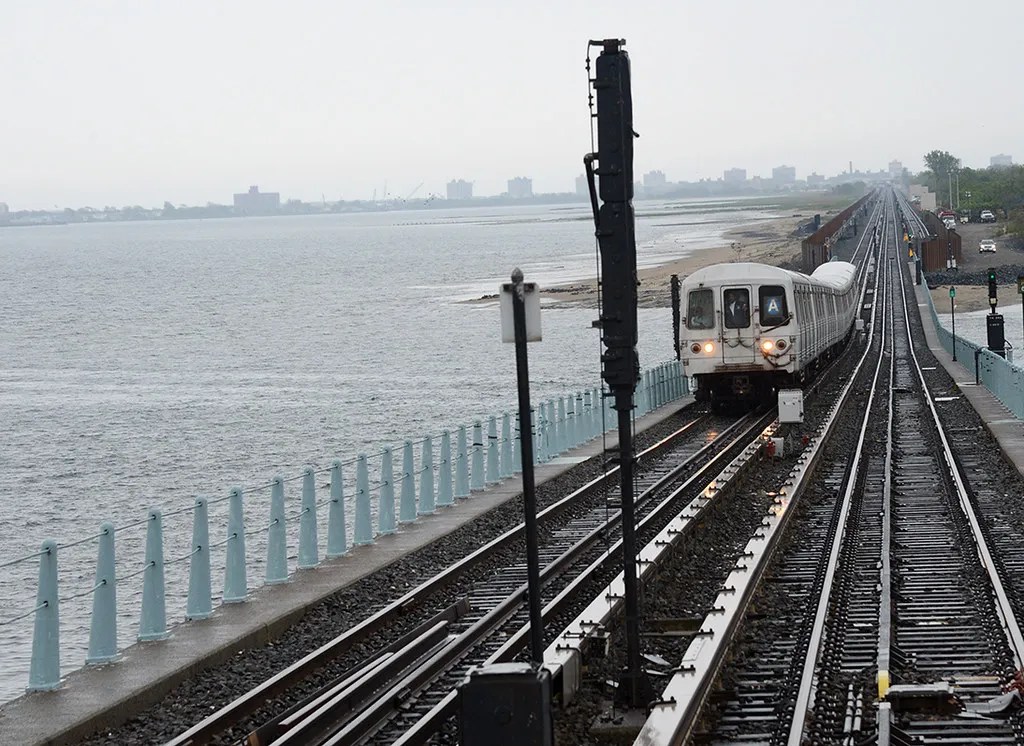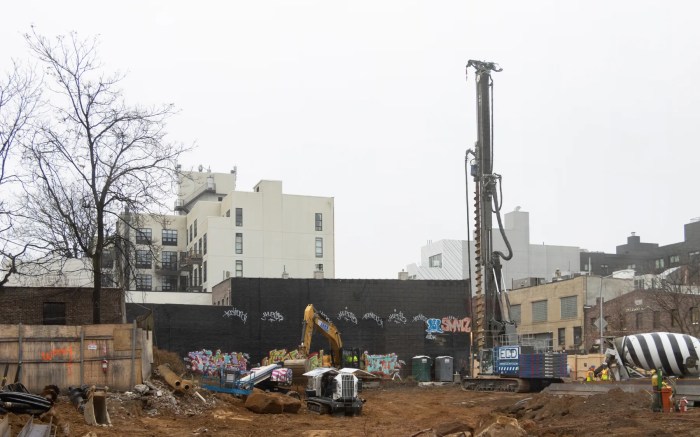By Amanda Kludt
Yuji Umeki, owner of Kenka izakaya Japanese restaurant on St. Mark’s Pl. between Second and Third Aves.
Over the last century, St. Mark’s Pl. has gone from dangerous to hip to avant-garde to punk back to dangerous again. It has seen residents the likes of James Fenimore Cooper, W.H. Auden, Abbie Hoffman and Leon Trotsky and performers and artists such as Lou Reed, Andy Warhol and Yoko Ono. Now, the famed street and main thoroughfare into the East Village has cleaned up its act and grown into a new spot for a burgeoning Little Tokyo.
Although St. Mark’s Pl. still retains its alternative air, with tattoo parlors, music stores, and the occasional punk, it seems a new crowd has come in. The street attracts an eclectic group of tourists, students and locals and sports a variety of shops and restaurants from T-shirt vendors to the New York Milkshake Company, but the Japanese restaurants are the businesses that have begun to dominate the scene. St. Mark’s, from Third Ave. to Avenue A now has seven Japanese restaurants, with two coming soon, four other Asian restaurants ranging from Chinese to Thai to pan-Asian, two Japanese markets, one Japanese toy shop, and one karaoke bar, with another soon following. It’s quite a change from Warhol at the Electric Circus or Reverend Joyce Hartwell’s former All-Craft drug-and-alcohol rehabilitation center.
While some longtime residents have complained about the sanitized commercial chains, new condominium complexes, rising rents and noisy tourist traffic, few blame the growing Japanese presence for their problems. East Villagers are used to seeing St. Mark’s Pl. change with new influences. “I think it’s traditionally been a neighborhood that’s had many different groups putting their imprint on the community,” said Marilyn Appleberg, president of the 10th and Stuyvesant Sts. Block Association and co-owner of Acquired Taste vintage shop on E. 10th St. “It’s wonderful to see the communities living side by side.” Appleberg remembers St. Mark’s most vividly from its heyday in the ’60s when it was a “slightly more raucous street,” but says that changes like those happening now are inevitable. “I don’t see anything negative as long as there’s not a strong displacement,” she said.
“There’s been an Asian interest in the area for years. Years ago, I remember they would have Asian block parties,” said Helayne Seidman, a resident of St. Mark’s for the last 25 years and founding member of the St. Mark’s 2/3 Block Association. She said she likes that the Asian presence has grown on St. Mark’s Pl. because the neighborhood is popular without being dangerous. “The Japanese restaurants are a good addition to the block. They seem like they are striving businesses. There’s a large demand for them, because there’s a large Asian population moving here.”
Q. Sakamaki, a Japanese photographer and longtime East Village resident, explained how the Japanese enclave took root during major transitions in the neighborhood. He said that in the late ’80s and early ’90s, St. Mark’s Pl. was empty at night save for the local drug dealers. That all changed with gentrification and the removal of many of the neighborhood’s squatters. Sakamaki added, “Because of gentrification, the rent fees skyrocketed,” and therefore pushed out a lot of dangerous individuals and large-scale drug dealers.
At the same time that the aftermath of gentrification “cleaned up” St. Mark’s, a nearby Japanese enclave, located in the area of Ninth St. and Stuyvesant St. between Second and Third Aves., expanded. According to Sakamaki, the Japanese presence on Ninth St. began when a Japanese restaurant owner named Yagi bought an apartment building there and opened a restaurant. Although he didn’t rent exclusively to Japanese residents or hire only Japanese workers, his success stimulated the growth of a Japanese community.
Different theories explain the growth of the Japanese presence on and around St. Mark’s Pl., but Honi Klein, executive director of the Village Alliance business improvement district, may have discovered one of the most plausible ones. “I myself was curious about it, why there was such an expansion of restaurants and supermarkets,” said Klein, explaining that she asked a property owner on the block. The property owner, who was not identified, told Klein that when visitors come into the city from Japan, they go to Sunrise Mart, a Japanese market above St. Mark’s Bookshop on Stuyvesant St. After they get their newspapers, they go out to eat on nearby St. Mark’s, creating a huge demand for Japanese restaurants. “That’s as good a reason as any,” said Klein.
Restaurants with Japanese owners like Dojo on St. Mark’s Pl. and Around the Clock Diner on Stuyvesant St. have been neighborhood staples for years, but the new restaurants popping up all over St. Mark’s and catering to these tourists and locals alike are called izakayas in Japanese. Sakamaki said that izakayas are somewhere between bars and restaurants. They are casual, small and centered around drinking and socializing, but contain a great variety of Japanese dishes for a low price. “They are getting popular in New York because it’s so inexpensive,” he said. “Izakaya attract younger people, but that’s not bad.”
Yaki Tori Taisho, an izakaya on St. Mark’s Pl., fits Sakamaki’s profile exactly. Located down a few steps on the north side of the street, the restaurant looks unremarkable to the average pedestrian. Inside, the restaurant’s long shiny wooden bar dominates the whole room, displaying the informal but social environment inherent in all izakayas. Small tables occupy a separate area in the back and the front, but most seating remains at the bar. Restaurants like these are the new trend in the Japanese domination of St. Mark’s Pl.
There have also been reports that a kaiten sushi — the equivalent of a sushi McDonald’s — an inexpensive restaurant serving small plates of sushi on a conveyor belt, is coming to St. Mark’s soon, and that the Into the Woods store will be leaving its space, to be replaced by yet another Japanese restaurant.
Izakayas have become so popular that Taisho’s owner opened a second restaurant down the block to avoid losing customers. But the real question is not whether or not there is a growing Japanese presence on St. Mark’s Pl. — the question is how long the new transformation will last. Perhaps the street known for its edginess and alternative character will turn into a Little Tokyo. But, maybe the izakayas will be replaced by a new cultural movement and fade into St. Mark’s Pl. history with the Beat jazz clubs and the Electric Circus.
Read more: Brooklyn Diocese Plans Restructuring for Improvement







































